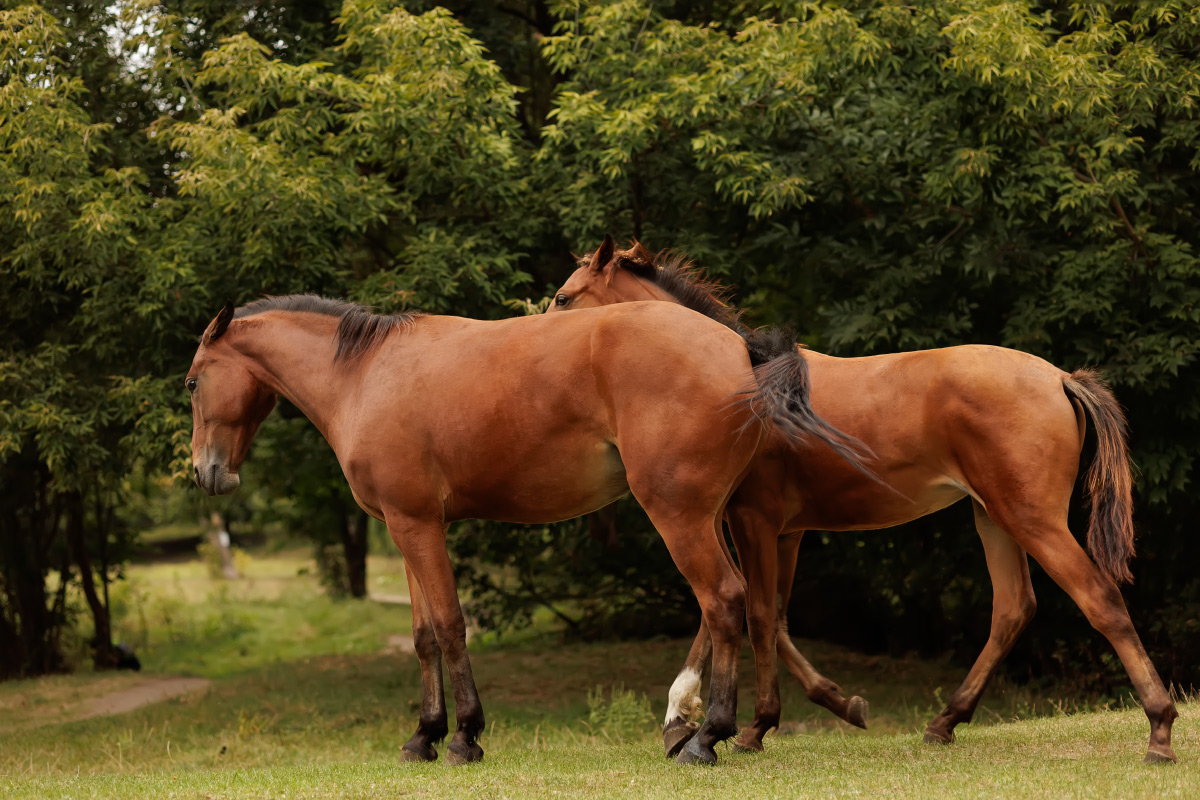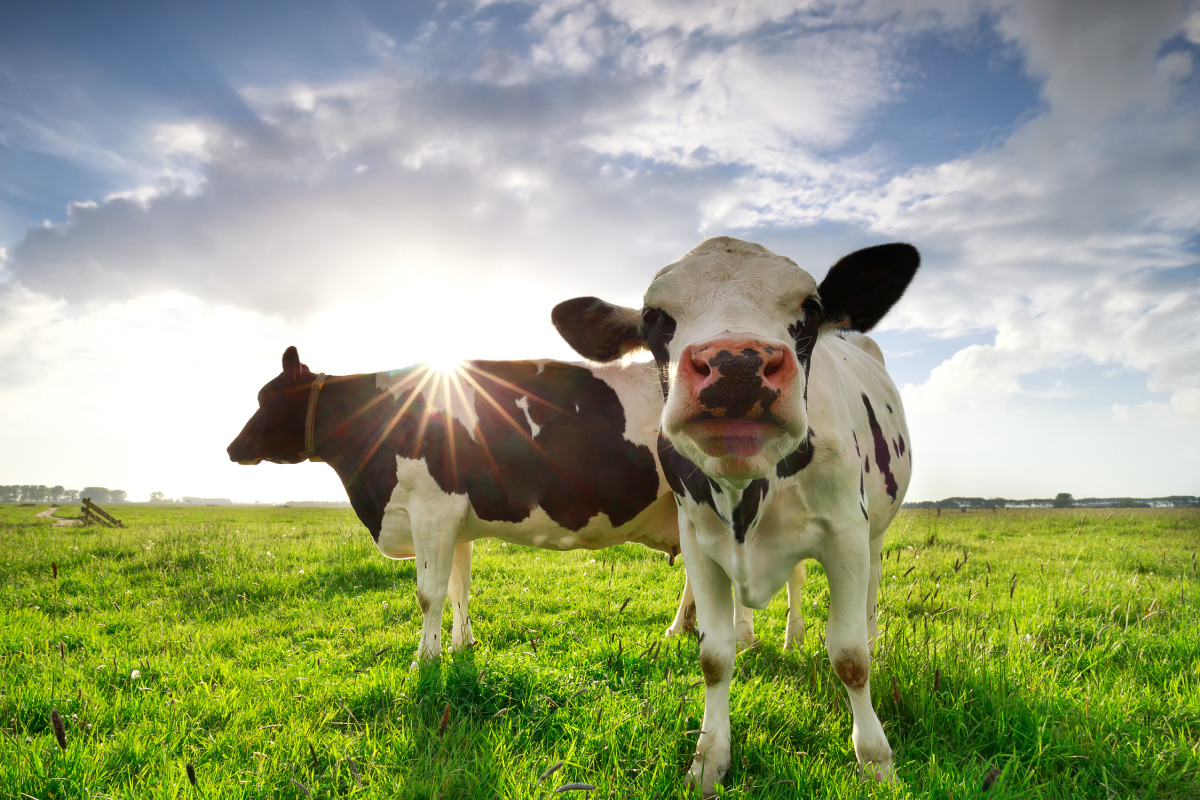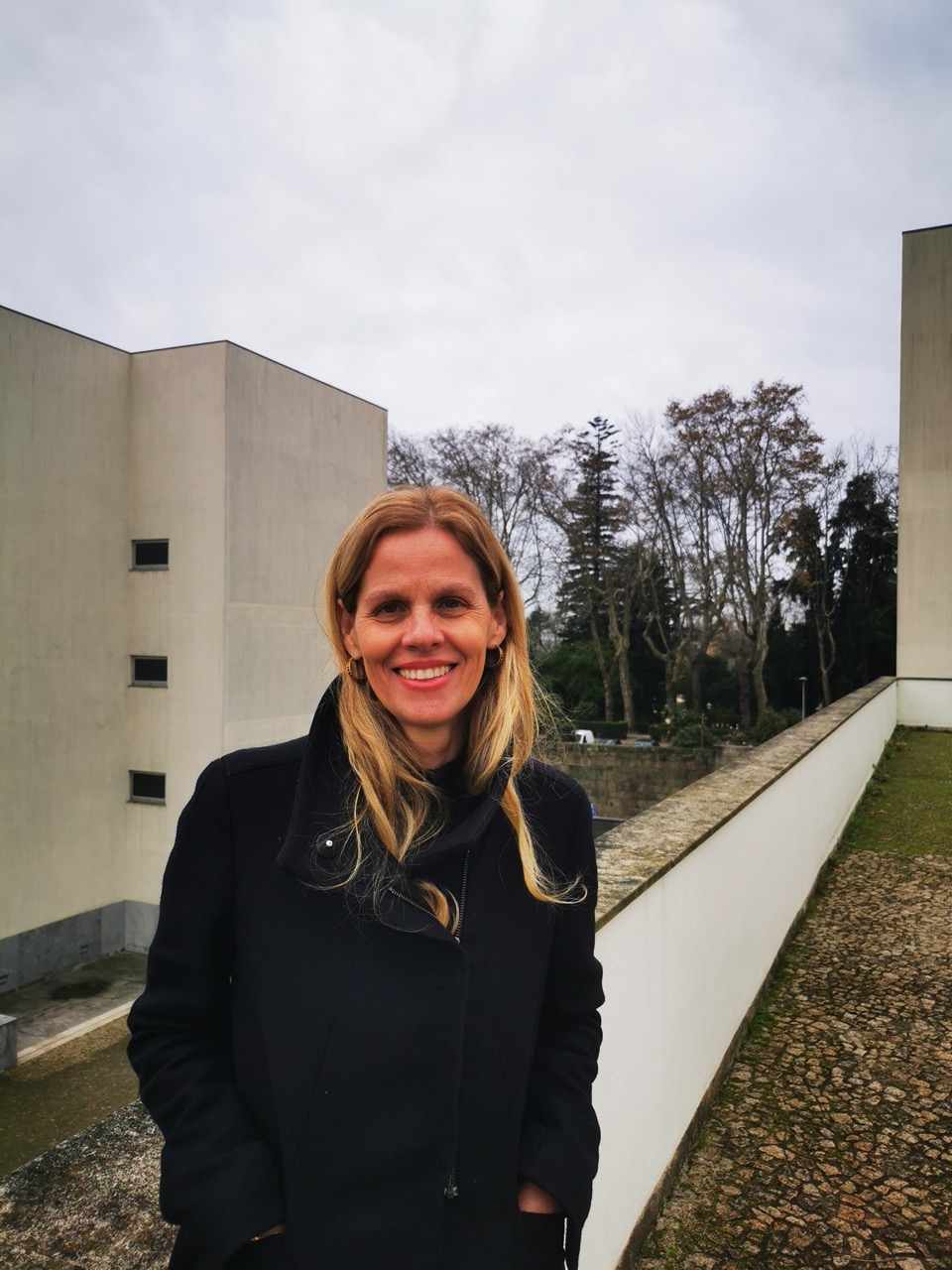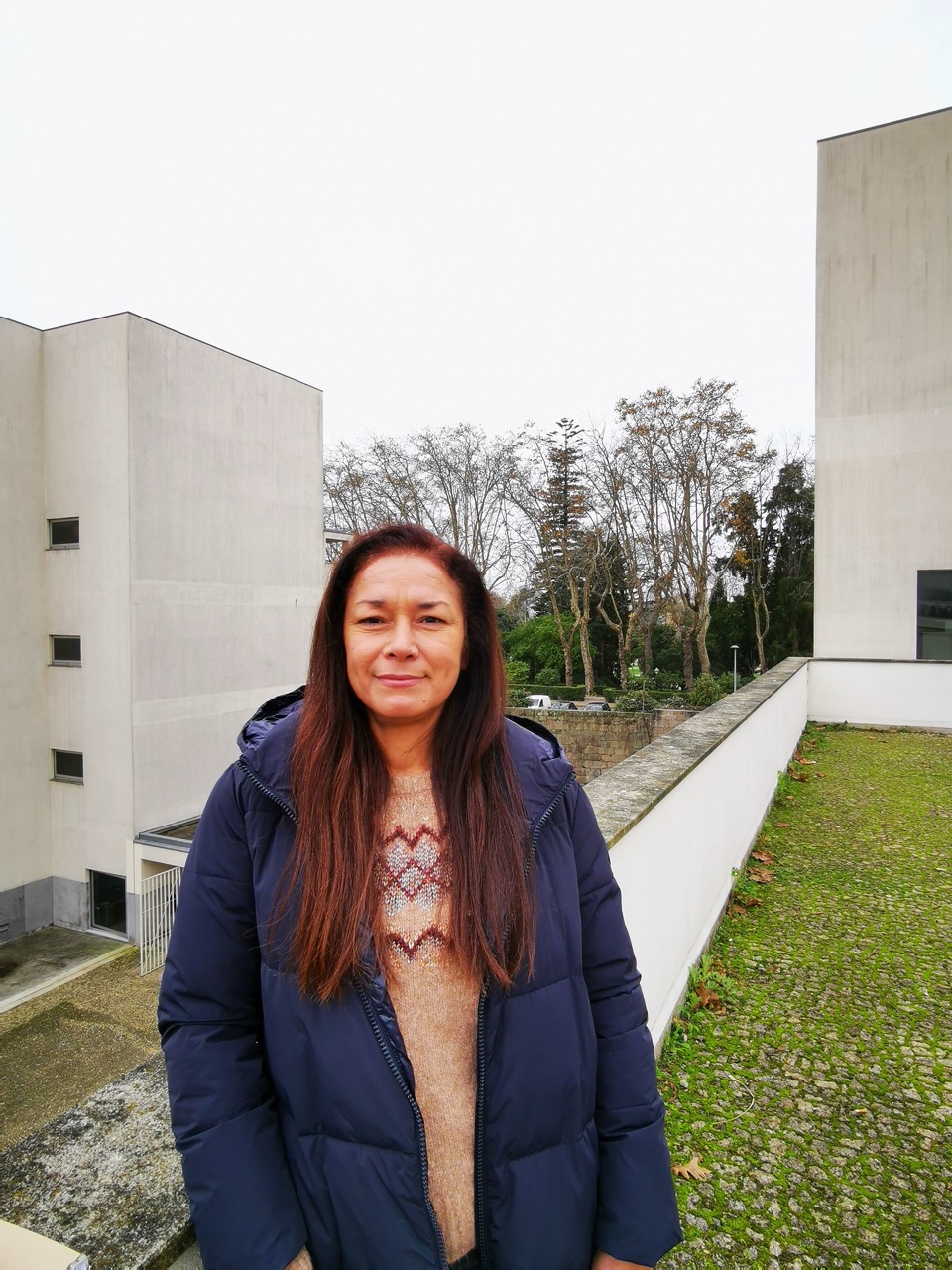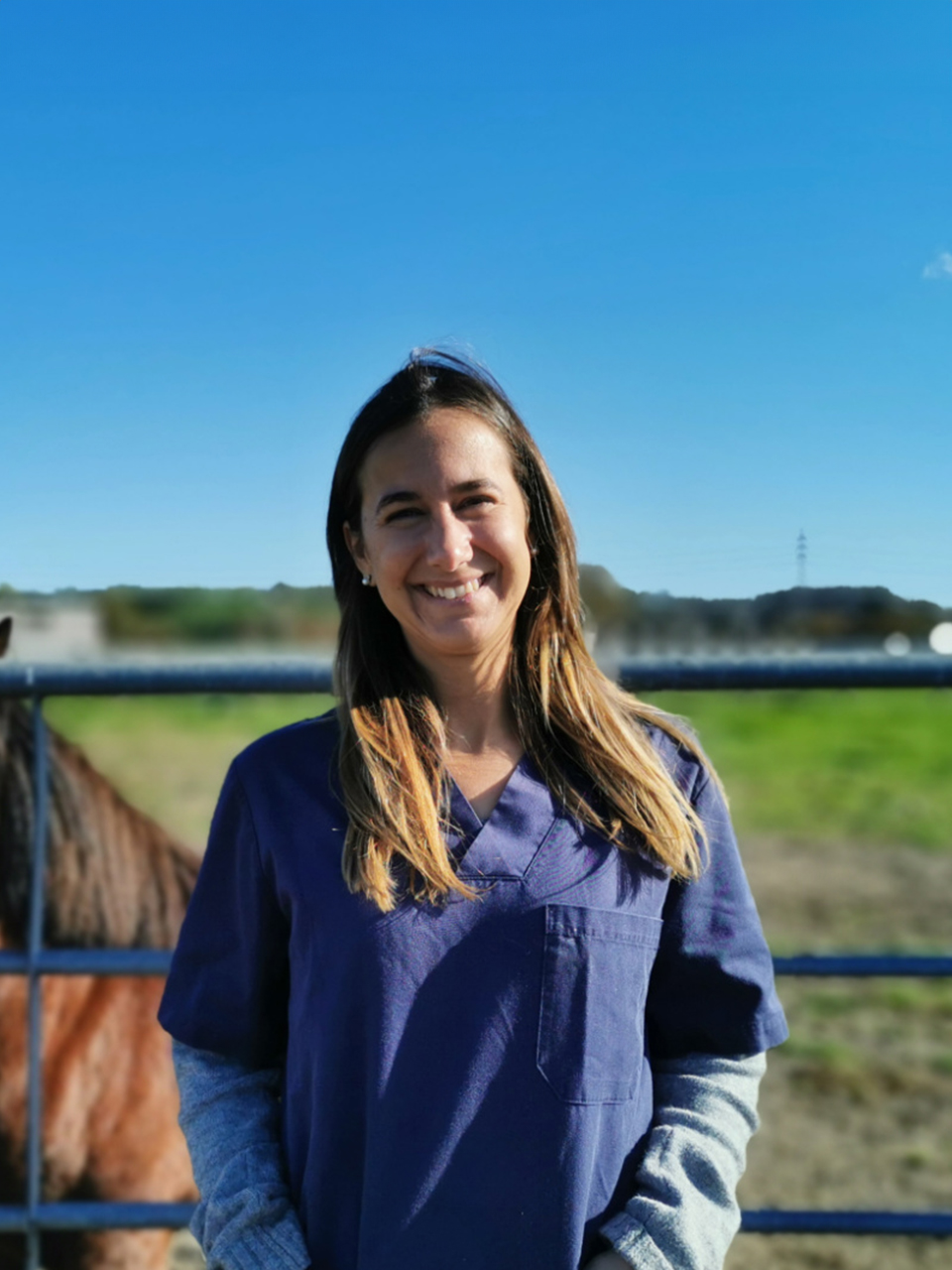SUPPORT FOR THE TEACHING OF THERIOGENOLOGY
VETERINARY MEDICINE
CRAV is an educational, research, and community service center open to the general public, with a focus on equine reproduction.
The Animal Reproduction Center of Vairão
The Animal Reproduction Center of Vairão (CRAV) was established to support the teaching of Theriogenology (Animal Reproduction) for students in the Integrated Master’s in Veterinary Medicine (MIMV) at the Abel Salazar Biomedical Sciences Institute (ICBAS) of the University of Porto, and to provide community services in the areas of assisted reproduction, diagnosis, and treatment of reproductive pathologies in domestic animals.
Located on the Agrário de Vairão Campus, about 30 km north of Porto, CRAV features pasture areas, enclosures with shelters and boxes for horses, stocks for equine examination, a semen collection room with a phantom mare, and a fully equipped equine reproduction laboratory. The current permanent technical staff of CRAV is made up of 2 veterinarians, one of whom is a European Specialist in Animal Reproduction at EBVS®. Additionally, CRAV hosts a Team for Collection and Production of Bovine Embryos (PT0107TE PIV), which benefits from the ongoing and exclusive contribution of an engineer with over 20 years of experience in in vitro production of bovine embryos.


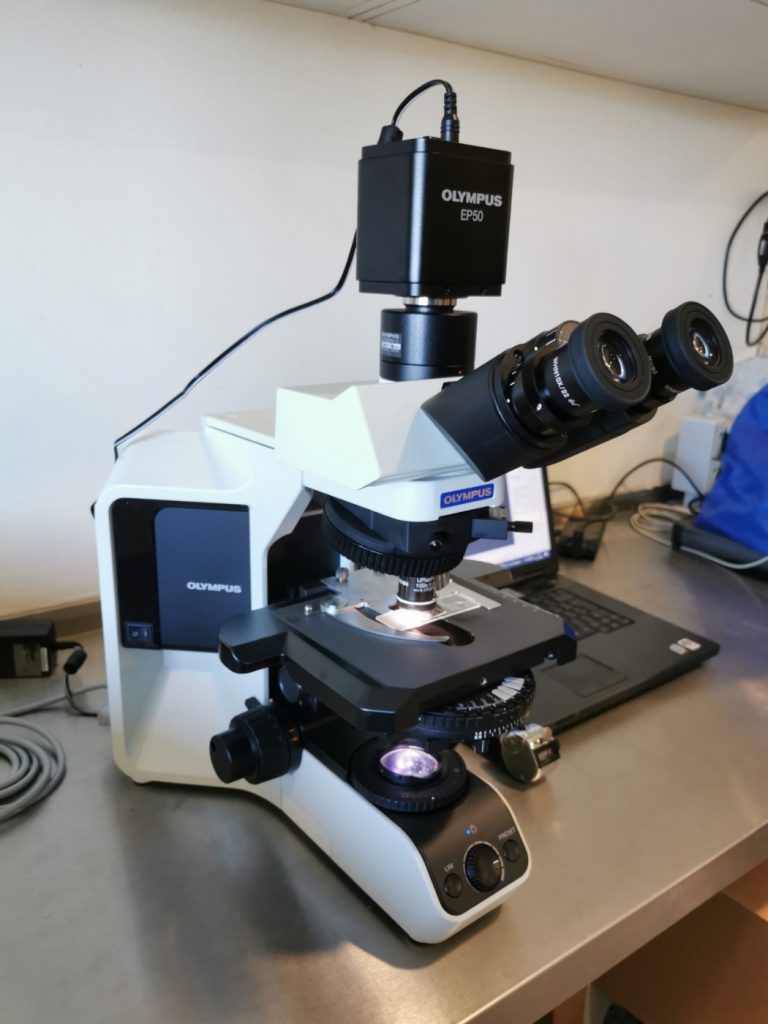
The CRAV is an educational, research, and community service center open to the general public, with a focus on equine reproduction.
Case report: Long term follow-up of a large unilateral epididymalcyst in a stallion used for teaching: Is this condition associated with infertility?
Diversidade do Microbioma do Clitóris em Éguas Reprodutoras: Implicações em endometrites e na saúde reprodutiva da égua.
R. Cunha, S. Duarte-Coimbra, I. Amorim, T. Guimarães, J. Lopes, D. Marques, L. Pérez-Parda, A. Rocha, A. Beja-Pereira
Preputial lymphangioma in a stallion: First report.
José Eduardo Gomes, Ana Canadas-Sousa, Tiago Guimarães, Raquel Cunha, Patrícia Dias-Pereira. (2023)
Single layer density centrifugation improved semen quality in a stallion with hydrocele.
Our TEAM
Direction and Clinical Team
Handlers and support services

Pedro Maia
Head of the handlers team

Maria Rosa Silva
Handler

António Leal
Handler
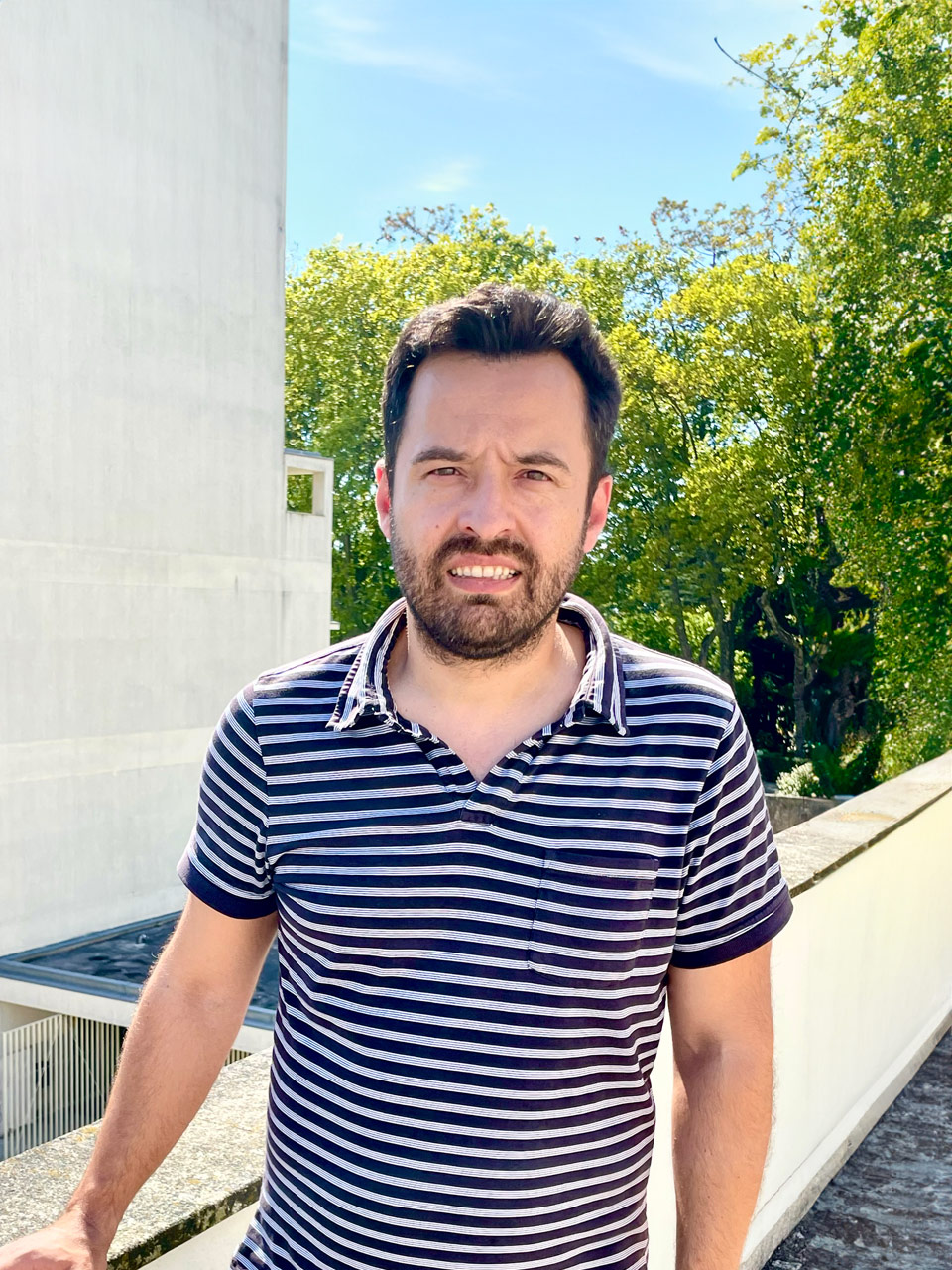
André Soares
Finance Manager, Human Resources

Bárbara Oliveira
Administrative Manager
FAQ
What is embryo collection and transfer, when is it justified, and what are the main costs associated with it?
Embryo transfer involves harvesting the embryo from the donor mare 7 to 8 days after she has been inseminated or bred by the stallion, and then transferring the embryo to the uterus of another mare, known as the recipient mare, who should be in a similar stage of the estrous cycle.
The embryo collection and transfer procedures do not involve surgical procedures. The collection is done by flushing the uterus of the donor mare, and the embryo is transferred to the uterus of the recipient mare through a catheter, similar to the process used for artificial insemination.
The main reasons for performing embryo collection and transfer include: obtaining more than one foal per breeding season/mare; obtaining foals from mares that no longer carry pregnancies to term or no longer produce healthy foals; and obtaining offspring without taking the mare out of competition.
The primary cost associated with this process is acquiring and maintaining recipient mares. Cryopreserving the embryo can facilitate the transfer component, as it eliminates the need for available recipient mares at the time of embryo collection.
At CRAV, the main cost in an embryo collection and transfer program is the acquisition of recipient mares from ICBAS. To reduce this cost, clients have the option to provide a recipient mare, which must meet specific requirements.
Can embryos from mares be cryopreserved like those from cows?
Bovine embryos are easily cryopreserved using two methods, vitrification or freezing, with the best fertility results achieved with blastocysts (embryos at 7 to 8 days).
However, the equine blastocyst is much larger than that of cattle, containing larger quantities of fluids inside, which can damage embryonic cells during the freezing process.
Additionally, the equine blastocyst forms an acellular capsule that maintains its rounded shape, facilitating the embryo’s movement in the uterus, a crucial process in horses to maintain gestation. While a highly effective method of vitrifying equine blastocysts after micromanipulation has been developed at Texas A&M University, most commercial programs cryopreserve embryos at 6 to 6.5 days (morulas), before the capsule formation, thereby avoiding the need for micromanipulation, a complex operation requiring expensive equipment.
In collaboration with Dr. Lisa Maclellan from Australia, a world-renowned scientist in equine embryo manipulation, we have established cryopreservation protocols in our laboratory. During the process, we produced what, to our knowledge, was the first horse born in the country after the transfer of a cryopreserved embryo. Coincidentally, Josefina, the recipient mare of the embryo, is the first horse in the world to be obtained after the transfer of an embryo produced using frozen epididymal semen.
Is there any advantage to cryopreserving horse embryos?
There are several advantages to cryopreserving horse embryos: it allows preservation of genetics from both parents instead of just the male parent as with frozen semen; embryos can be stored indefinitely and used when most suitable; there’s no need to have recipient mares synchronized with the donor mare at the time of embryo collection, and frozen embryos can be easily transported for transfer into recipient mares in different geographical locations.
It is also a useful technique for preserving embryos from young, untested mares, allowing them to be transferred only if the donor mare proves to be of sporting or other interest.
The cryopreservation of spermatozoa from the tail of the epididymis serves what purpose and what do I need to do?
In cases of sudden death or emergency castration of a stallion, it is possible to collect and freeze the last reserve of spermatozoa from the epididymides of the animal. In this scenario, the testicles should be removed and immediately refrigerated after the death or castration of the animal, and then shipped under refrigeration (not frozen) to the laboratory.
Scientific Publications
José Eduardo Gomes, Ana Canadas-Sousa, Tiago Guimarães, Raquel Cunha, Patrícia Dias-Pereira. 2023. Preputial lymphangioma in a stallion: First report
R. Cunha, S. Duarte-Coimbra, I. Amorim, T. Guimarães, J. Lopes, D. Marques, L. Pérez-Parda, A. Rocha, A. Beja-Pereira. Diversidade Do Microbioma do Clitóris em Éguas Reprodutoras: Implicações em Endometrites e na Saúde Reprodutiva da Égua.
Silva GF, Cunha R, Carvalho F, Ribeiro M, Rocha A, Amorim I and Guimarães T (2023) Case report: Long term follow-up of a large unilateral epididymal cyst in a stallion used for teaching: Is this condition associated with infertility? Front. Vet. Sci. 10:1145742.
doi: 10.3389/fvets.2023.1145742
Guimarães T, Oliveira C, Crespo J, Porto B, Cunha R, Rocha A. 2020. Congenital stricture of the vestibulo-vaginal fold in a mare with normal karyotype. Equine Veterinary Education.
Marcos R, Ribeiro Y, Santos M, Correia-Gomes C, Macedo S, Guimarães T, Blielbernicht M, Caniarri M, Rocha A. 2020. The advantages of using cytospind of uterine lavage fluid for the diagnosis of equine endometritis. Theriogenology
Pavani KC, Rocha A, Oliveira E, Moreira da Silva F, Sousa M. 2020. Novel ultrastructural findings in bovine oocyte matured in vitro. Theriogenology 143: 88-97.
Macedo S, Bliebernicht M, Carvalheira J, Costa A, Ribeiro F, Rocha A. 2018. Effects of two freezing methods and two cryopreservation media on post-thaw quality of stallion spermatozoa. Reprod Dom Anim 2018;00:1-6.
Pavani KC, Rocha A, Baron E, Lourenço J, Faheem M, Moreira da Silva F. 2017. The effect of kinetic heat shock on bovine oocyte maturation and subsequentgene expression in targeted genes. Zygote: pages 1-7
Lopes G, Soares L, Ferreira P, Rocha A. 2015. Tris-egg yolk-glycerol (TEY) extender developed for freezing dog semen is a good option to cryopreserve bovine epididymal sperm cells. Reprod. Domest. Anim. 50:97-103.
Guimarães T, Lopes G, Pinto M, Miranda C, Correia MJ, Damásio L, Thompson G, Rocha A. 2015. Colloid centrifugation of fresh stallion semen prior to cryopreservation decreased microorganism load of frozen-thawed semen without affecting seminal kinetics. Theriogenology 83:186-191.
Guimarães T, Miranda C, Pinto M, Silva E, Damásio L, Costa AL, Correia MJ, DuarteJC, Cosinha C, Lopes G, Thompson G, Rocha A. 2014. Effect of breeding activity on the microflora of the external genitalia and in the semen of stallions, and the relationship between micro-organisms on the skin and on the external genitalia. Reprod. Domest. Anim. 49:926-933.
Guimarães T, Graça L, Ferreira P, Leal I, Rocha A. 2012. Quality of frozen-thawed stallion epididymal spermatozoa cryopreserved after two refrigeration protocols. Animal Reproduction Sci. 136:85-89.
Rocha A, Guimarãe T, Duarte JC, Cosinha C, Lopes VTA, Faria F, Amorim I, Gartner F. 2012. Clinical, bacteriological and histopathological findings of a testicular fibrosis in a 6 – years old Lusitano stallion. Case Reports in Veterinary Medicine. Volume 2012. Article ID 989687, 5 pages.
Costa AL, Martins-Bessa A, Rebello de Andrade A, Guimarães T, Rebordão MR, Gamboa S, Bravo PP, Correia MJ, Gaivão I, Rocha A. 2012. Single Layer Centrifugation with Androcoll-E improves the quality of chilled stallion semen. Open J. Anim. Sci. 2:159-165.
INTERNSHIPS / COLLABORATIONS
INTERNSHIPS / COLLABORATIONS
Do you have any questions?
Contact us.
Links
Contactos
Vairão 4485-144
Portugal
Call to national mobile network



